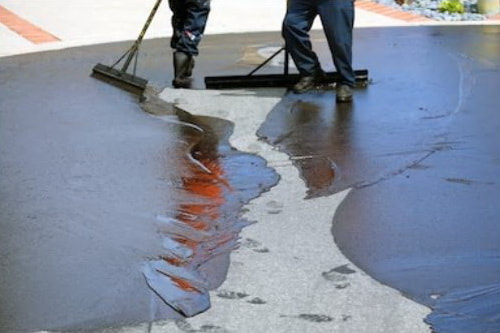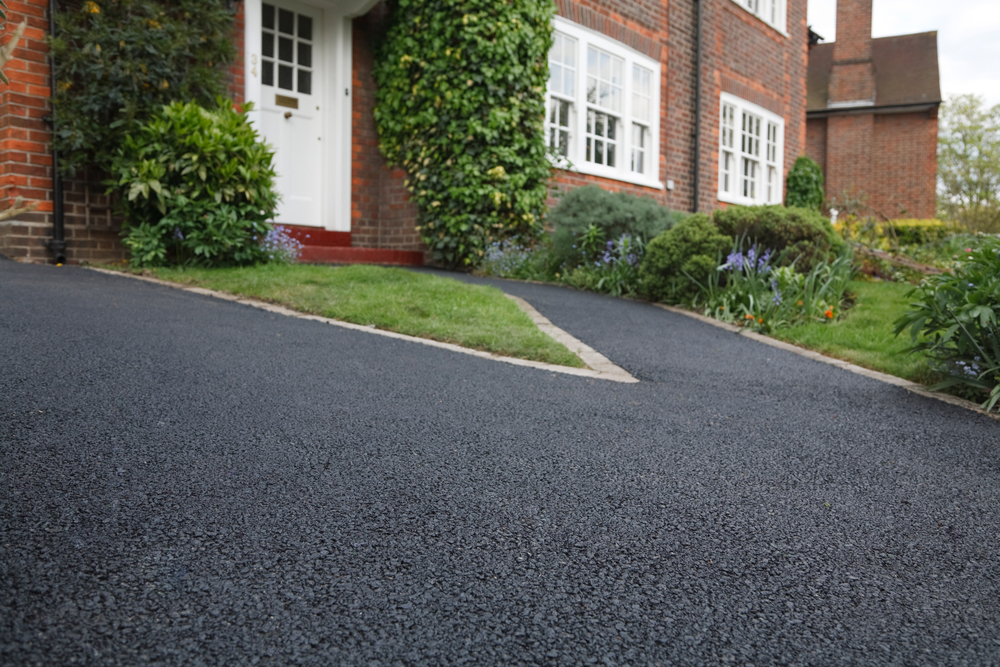Guard Surface Areas with Specialist Asphalt Sealing: Cold Mix Fundamentals
Guard Surface Areas with Specialist Asphalt Sealing: Cold Mix Fundamentals
Blog Article
Cold Mix Asphalt Vs. Hot Mix Asphalt: Which Is Right for You?

Structure Distinctions
Cold mix and hot mix asphalts vary considerably in their make-up, with distinct attributes that influence their performance and applications. Cold mix asphalt is created by emulsifying the asphalt binder with water and an emulsifying representative before mixing it with accumulation. This approach enables the asphalt to be workable at lower temperature levels, making it perfect for momentary repairs and for use in chillier weather. Warm mix asphalt, on the other hand, is manufactured at heats, typically between 300-350 ° F, which aids to achieve much better compaction and a much more sturdy end product. The hot mix asphalt production process includes heating up the accumulation and asphalt binder independently prior to incorporating them at the asphalt plant.
In addition, chilly mix asphalt has a tendency to be much less dense and a lot more versatile than hot mix asphalt. This versatility makes it much better fit for areas with higher levels of activity, such as driveways or roadways with hefty website traffic. On the other hand, warm mix asphalt is recognized for its high longevity and resistance to rutting and splitting, making it a preferred selection for freeways and high-traffic roadways where durability is important.
Setup Process Variances
The procedure of mounting chilly mix and hot mix asphalt exhibits notable differences in their treatments and demands. Cold mix asphalt, being an extra versatile material, can be used straight from the bag or container onto the fracture or damaged area. It calls for very little preparation work, such as cleansing the location and compacting the cool combine with hand tools. This makes it a hassle-free choice for quick and short-lived solutions. In comparison, hot mix asphalt demands a much more fancy installment process. It involves heating up the mix to high temperature levels prior to laying it down on a correctly ready base. The preparation consists of condensing the base, applying a tack coat, and using heavy machinery like pavers and compactors for a smooth and resilient finish. Because of the heating demands, hot mix asphalt setups are generally lugged out by experts with customized devices, ensuring a much more irreversible and structurally sound result.
Toughness and Longevity Factors
When considering asphalt options, durability and long life are critical aspects to assess for lasting sidewalk efficiency. Hot mix asphalt (HMA) is recognized for its phenomenal longevity and durability.
In terms of long life, HMA normally exceeds CMA due to its premium stamina and resistance residential properties. HMA pavements have a longer life span, needing less constant repair work and upkeep, which can equate to set you back savings over time. Furthermore, HMA pavements are extra easily personalized to meet details job requirements, better enhancing their durability.
Expense Considerations
Thinking about the monetary ramifications is a official source vital facet when reviewing the selection in between warm mix asphalt (HMA) and cool mix asphalt (CMA) for sidewalk jobs. While the preliminary expense of hot mix asphalt is usually higher than that of cold mix asphalt, HMA frequently offers a more cost-effective solution in the lengthy run due to its premium longevity and long life.
In addition to product costs, it's crucial to think about the expenses connected with installment and maintenance when contrasting HMA and CMA. Eventually, the choice between HMA and CMA must take into account not just the first expense yet also the long-lasting financial ramifications to establish the most affordable alternative for the particular sidewalk task.
Environmental Impact Contrast
Contrast of the environmental effects in between hot mix asphalt (HMA) and chilly mix asphalt (CMA) discloses distinctive differences in sustainability methods. HMA manufacturing requires heats, bring about increased energy usage and greenhouse gas exhausts. The process also releases unpredictable natural compounds (VOCs) and unsafe air toxins (HAPs) into the environment. On the other hand, CMA is produced and used at lower temperature levels, reducing energy usage and discharges significantly. The lower production temperatures of CMA lead to reduced gas intake and reduced degrees of carbon dioxide exhausts, making it an extra eco-friendly option.
Moreover, using CMA often involves reusing existing asphalt sidewalk, advertising source conservation and decreasing the amount of waste sent to land fills. This reusing element additionally this website improves the sustainability of CMA compared to HMA. Overall, when considering the ecological effect, CMA becomes a more environmentally lasting option because of its lower power demands, decreased emissions, and the possibility for reusing existing materials. By selecting CMA over HMA, roadway building and construction tasks can add positively to ecological preservation initiatives.
Verdict
In final thought, the selection between cool mix asphalt (CMA) and hot mix asphalt (HMA) depends upon various aspects such as composition, setup procedure, sturdiness, longevity, expense, and ecological impact. asphalt repair. While CMA uses a affordable and fast service for small fixings, HMA makes sure exceptional durability and longevity for rush hour areas. Take into consideration these elements very carefully to establish which kind of asphalt is the ideal selection for your paving needs

Considering the economic ramifications is an important facet when examining the choice between hot mix asphalt (HMA) and cool mix asphalt (CMA) for sidewalk jobs. While the initial expense of hot mix asphalt is typically greater than that of cool mix asphalt, HMA commonly provides a more economical official site solution in the long run due to its remarkable durability and durability. cold mix asphalt.Comparison of the environmental effects in between warm mix asphalt (HMA) and cool mix asphalt (CMA) reveals unique distinctions in sustainability techniques.In verdict, the choice in between chilly mix asphalt (CMA) and hot mix asphalt (HMA) depends on different variables such as make-up, installation process, sturdiness, durability, expense, and ecological influence
Report this page